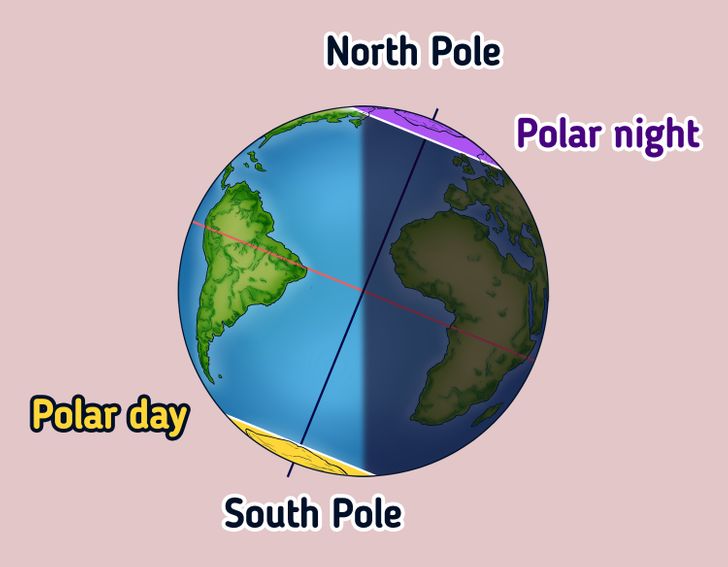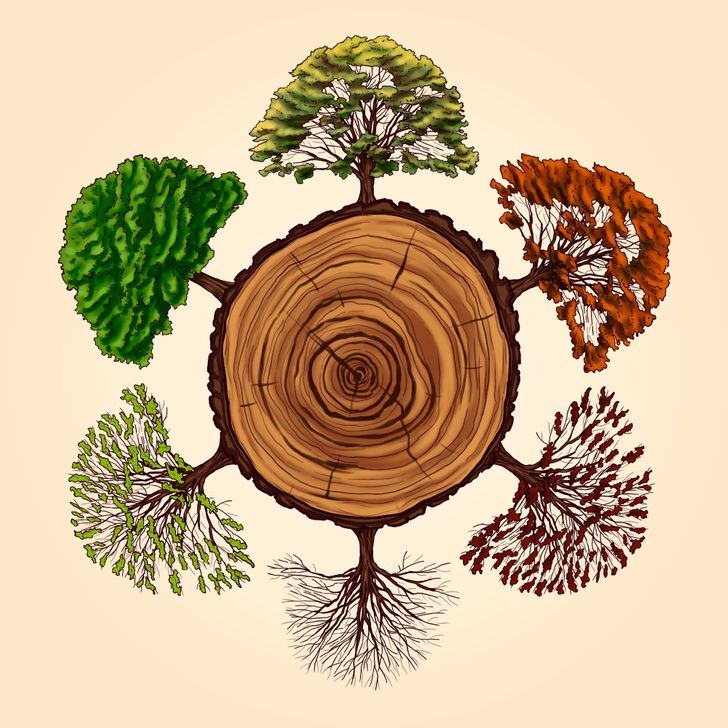Why Seasons Change on Earth
The seasons are recognized in different ways. In astronomy, they are determined by the solstices and equinoxes, while in meteorology, they are calculated by temperature. It’s meteorological calculations along with the division of the year into 4 seasons (the warmest, coldest, and 2 intermediate ones) that are the basis of the Gregorian calendar. This reckoning is commonly used in temperate and subpolar regions.
5-Minute Crafts is telling you why seasons change on Earth, whether or not they are the same everywhere, and how this change is manifested in different climate zones on the planet.
Why seasons change on Earth

The seasons change due to the tilt of the earth’s axis at an angle of approximately 23.4° with respect to the plane of the ecliptic. That’s a big circle that the rotation of the planet around the sun happens on. If the tilt was not there, the length of the day and night at any point on Earth would be the same, and the sun would occupy the same position throughout the year during the day.
The seasons are always different in the Northern and Southern Hemispheres — if summer starts in one hemisphere, winter settles in the other one. This is due to the fact that one part of the planet is exposed to more active sunlight than another in summer or winter. This impact changes as the Earth rotates in its orbit.
Half of the year (approximately from March 20 to September 22), the Northern Hemisphere is exposed to the sun most parts of the day, and the daylight reaches the maximum on approximately June 21. The same thing happens in the second half of the year but in the Southern Hemisphere where the light of day reaches its maximum on approximately December 21. These 2 moments are called the summer and winter solstices. In addition, the moments when daylight and night hours in both hemispheres are the same in duration are called the spring and autumn equinoxes.
If seasons are the same everywhere

The 4-season pattern is typical for temperate and subpolar regions. As we approach the equator, the change of seasons is less pronounced. So, in tropical and subtropical regions there is a slight change in solar exposure during the year. Only 2 seasons are distinguished there: the dry one and the monsoon season. They also change depending on the hemisphere. When the northern tropics have a monsoon season, the southern tropics get a dry season and vice versa.
In the northern and southern polar latitudes, the change of seasons also has its own characteristics. First of all, it is manifested in the change of the polar day and polar night. On a polar day, the sun always shines and doesn’t go beyond the horizon during the day, while on a polar night, on the contrary, the sun doesn’t rise. Such periods at the poles last about 6 months and also depend on the hemisphere. When there is a polar night in the North Pole, the South Pole has a polar day and vice versa. The sun rises and sets only once a year on poles, on the equinox day.
Other things that affect the change of seasons

Seasonal fluctuations depend on the proximity to the ocean or other large bodies of water, which can constrain the effects of extreme temperatures. Also, they can be affected by various weather conditions, such as strong winds, hurricanes, forest fires, and more.
In middle latitudes, seasons can be distinguished based on environmental data, without fixed calendar dates. That means there are 6 periods in regions with a temperate and mild climate in the Northern Hemisphere. During these periods, the birds change their behavior, while plants flower or wilt.
- Early spring (from February to March): The buds of deciduous trees start to swell, and some species of migratory birds move from winter to summer habitats.
- Spring (from middle March to the end of April): Tree buds start to show leaves, and birds start to nest.
- The midsummer (from the beginning of June till the middle of August): Trees are completely covered in leaves and birds raise their offspring.
- The end of summer (from the middle till the end of August): Leaves start to change their color and young birds get mature, join adult birds, and prepare for the fall migration together with them.
The traditional harvest takes place at the beginning of September. - Fall (starts in the middle-end of September): The leaves turn brown and fall off, and the birds return to their wintering locations.
- Winter (starts in November or December): Trees shed their leaves completely, and migratory birds finally settle in winter habitats.